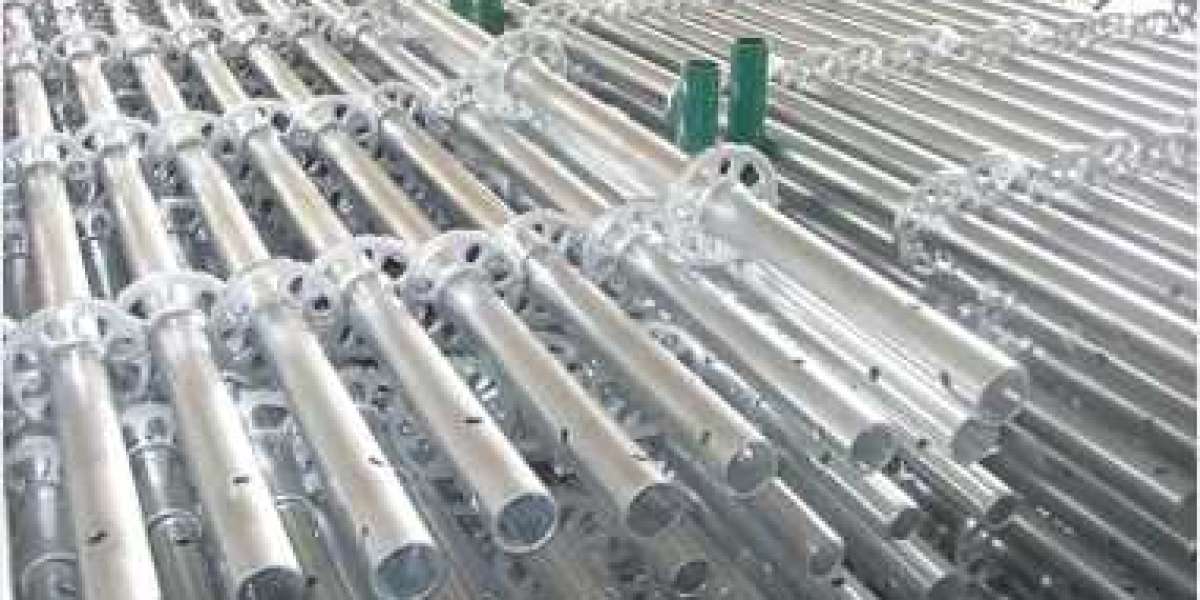When it comes to scaffolding, there are a variety of systems to choose from. Whether you’re working on a small residential project or a large-scale industrial site, selecting the right scaffolding is critical for safety, efficiency, and cost-effectiveness. Two of the most common types are Ringlock scaffolding and traditional scaffolding. Both have their advantages and unique features, but how do you know which one is the best choice for your next project? Let’s dive into the key differences and explore which system may be the winner for you.
What is Ringlock Scaffolding?
Ringlock scaffolding is a modular, multi-purpose scaffolding system that uses a combination of vertical posts, horizontal braces, and specialized ring connectors to create a sturdy, flexible scaffold. This system gets its name from the ring-shaped connectors that are used to join various components together.
Key features of Ringlock scaffolding:
Quick assembly and disassembly: The ringlock design allows for rapid setup and takedown, making it ideal for projects that need to move quickly.
Versatility: Suitable for a wide range of applications, from residential to industrial projects, and even large-scale construction.
Strength and stability: The interlocking ring system ensures a high level of structural integrity, making it safer and more secure.
Cost-effective in the long term: While the initial investment may be higher, the durability and reuse factor can make it more cost-effective over time.
What is Traditional Scaffolding?
Traditional scaffolding, often referred to as tube and clamp scaffolding, consists of basic metal pipes (tubes) and clamps that are manually assembled and secured to create a scaffold structure. This system is flexible but can be more labor-intensive compared to modern scaffolding systems like Ringlock.
Key features of Traditional scaffolding:
Customizable: Traditional scaffolding can be easily adjusted to fit any project’s specific needs, as the pipes and clamps can be arranged in various configurations.
Time-consuming setup: Assembly and disassembly can take longer, as it requires careful placement of each component.
Less expensive initially: While the upfront costs of materials may be lower, traditional scaffolding can end up being more expensive in the long run due to longer labor hours.
Heavy: The individual parts are often larger and more cumbersome, making transportation and handling more difficult.
Comparing the Two: Which One is Better?
1. Ease of Use
When it comes to ease of use, Ringlock scaffolding clearly stands out. The modular design and quick-connect ring system make it easy to assemble and disassemble without requiring a lot of tools or specialized skills. Traditional scaffolding, on the other hand, requires more time and labor to set up, as each pipe and clamp must be manually adjusted and secured.
2. Flexibility and Adaptability
Both systems are quite flexible, but Traditional scaffolding wins in terms of customizability. Since you can design and adjust the structure to fit any site requirements, it’s ideal for irregular or complex shapes. However, Ringlock scaffolding still offers a lot of flexibility through its modular design, allowing it to be adapted to various construction sites with minimal modifications.
3. Safety and Stability
When it comes to safety, Ringlock scaffolding tends to be more stable due to the interlocking nature of the ring system. This design eliminates the need for excessive components or complex adjustments, which reduces the risk of failure. The Traditional scaffolding, although strong, can be a bit more prone to errors during setup, especially if not assembled properly.
4. Durability
Ringlock scaffolding is made of high-quality steel and designed to withstand wear and tear for multiple uses. This makes it an excellent choice for long-term projects. Traditional scaffolding, while also durable, may suffer from wear and tear more quickly due to the constant disassembly and reassembly process, especially if components are not maintained properly.
5. Cost
Traditional scaffolding often has a lower upfront cost, which may appeal to smaller projects or those on a tight budget. However, over time, the need for additional labor and maintenance may push the overall cost higher. Ringlock scaffolding may require a higher initial investment, but the long-term savings in labor and increased efficiency may make it the more cost-effective choice for larger or repetitive projects.
Which One Should You Choose?
Ultimately, the choice between Ringlock scaffolding and Traditional scaffolding depends on your project’s specific needs. Here’s a quick breakdown to help you decide:
Go for Ringlock scaffolding if:
You need quick assembly and disassembly.
Your project requires frequent relocations or adjustments.
You’re working on larger projects that demand higher stability and safety.
You want a more efficient and long-lasting solution with minimal maintenance.
Go for Traditional scaffolding if:
You have a smaller budget and the project is short-term.
You need highly customizable scaffolding for complex or irregular sites.
You’re working in environments where mobility and flexibility are not as important.
ZYD Scaffold: Your Partner for Scaffolding Solutions
At ZYD Scaffold, we understand that each project is unique, and we offer a variety of scaffolding solutions to meet the diverse needs of our clients. From Ringlock scaffolding to traditional scaffolding systems, we provide reliable, high-quality materials and expert advice to help you choose the right system for your construction or maintenance work.
Whatever your project requires, we’ve got you covered with scaffolding systems that prioritize safety, durability, and efficiency. Contact us today to learn more about our range of scaffolding solutions and find the best option for your needs.







